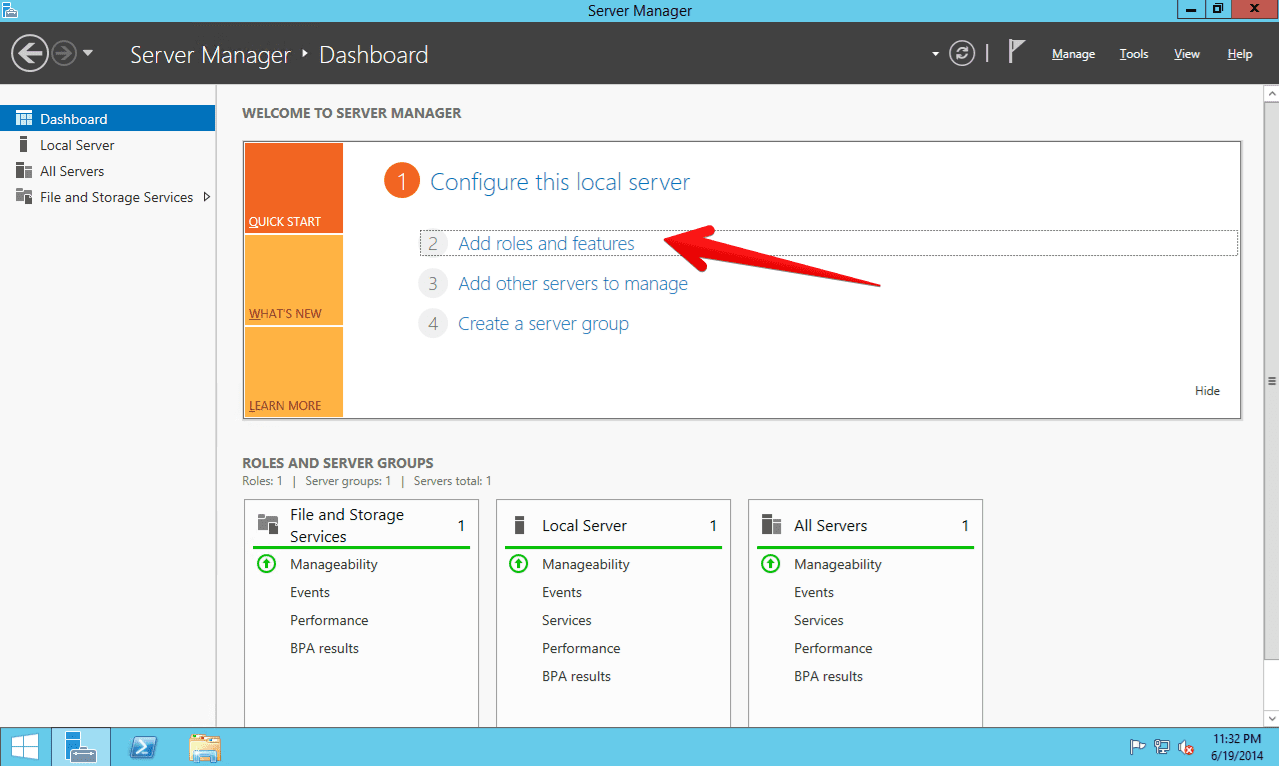
- WINDOWS SERVER 2012 TERMINAL SERVICES MANAGER INSTALL
- WINDOWS SERVER 2012 TERMINAL SERVICES MANAGER WINDOWS
The Console (Administrator) object represents a connection to the server through Terminal Services Manager. Keep in mind that this will also disconnect anyone who happens to be connected. If a particular server isn’t responding to terminal requests and you don’t want to reboot it, you can reset the protocol by right-clicking RDP-TCP Listener and selecting the Reset command from the resulting shortcut menu. Even though this particular listing only represents a protocol, it does have a useful purpose. RDP Listener represents the RDP-TCP protocol, which is used to establish terminal sessions. In Figure A, they include the RDP-TCP Listener, the Console (Administrator), and the RDP-TCP#1 (Administrator) objects. These vary with your individual sessions. Therefore, you’ll want to pay close attention to who else is already connected so that you don’t disrupt everyone’s productivity.īeneath the server listing in the column on the left, there are several objects. The more sessions that are connected to a server, the slower the server will run. The other reason that it’s important to know about other connected sessions is that terminal service connections can have a huge impact on server performance. You don’t want to do maintenance on a server at the same time as someone else, especially if you don’t know what the other person is doing. First, if an administrator is connected to a server through Terminal Services, they are likely performing some type of maintenance on that server. There are a couple of reasons why it’s important to know what other administrators are connected to Terminal Services.

Likewise, you’ll also see multiple console sessions listed if you open multiple instances of Terminal Services Manager. The reason is that if more than one Administrator is using Terminal Services Manager to control a server, you’ll be able to see that someone else is already working on the server. You may be wondering why Microsoft even bothered to list the console session. You’ll always see at least one console session because the console session is initiated automatically when you open Terminal Services Manager. A Console session merely indicates that someone is using Terminal Services Manager to interact with that server. In the figure, there’s also a session that says Console rather than listing an RDP-TCP code. For example, a connection represented by RDP-TCP#1 would indicate the first remote connection to the terminal server. A normal terminal session is indicated by RDP-TCP followed by a number. If you look in the Session column, you can see what type of session each connection is. In the pane to the right, you can see all of the terminal sessions presently connected to that server. In Figure A, I’ve selected a server named Bart.

However, if your Terminal Services Manager session doesn’t display what you expected, you can use the Find Servers In All Domains and the Connect To All Servers commands on the File menu to reinitiate the discovery process. Normally, the server detection process is completely automatic. This unified server view makes it easy to browse the connections hosted by multiple servers in multiple domains with only a few mouse clicks. Beneath each domain is a listing of each server within that domain that’s configured to use Terminal Services. In Figure A, notice that Terminal Services Manager has automatically detected all three of my network’s domains (NET, Production, and Test). Terminal Services Manager gives you a unified view of all terminal servers across all domains. When Terminal Services Manager loads, you’ll see a screen similar to the one shown in Figure A. You can access Terminal Services Manager by selecting Programs | Administrative Tools | Terminal Services Manager from the Start menu.
WINDOWS SERVER 2012 TERMINAL SERVICES MANAGER INSTALL
Terminal Services Manager is automatically installed onto any server that you install Terminal Services onto. Furthermore, the utility uses a single console to manage every terminal server in your entire organization. This tool is capable of controlling virtually all aspects of Terminal Services.
WINDOWS SERVER 2012 TERMINAL SERVICES MANAGER WINDOWS
Terminal Services Manager is a comprehensive tool for managing Windows 2000 Terminal Services.

I’ll also share some techniques and tricks you can use when troubleshooting problems with Terminal Services. In this Daily Drill Down, I’ll introduce you to Terminal Services Manager and explain its various features. Although other tools are available, the primary tool for managing Terminal Services is Terminal Services Manager. Whether you use Microsoft Windows 2000 Terminal Services purely as a network management tool or as a platform for hosting user terminal sessions, you need a method for managing it. Learn the features of the Terminal Services Manager and techniques and tricks for troubleshooting problems with it Step-By-Step: Monitor terminal server sessions using Terminal Services Manager


 0 kommentar(er)
0 kommentar(er)
